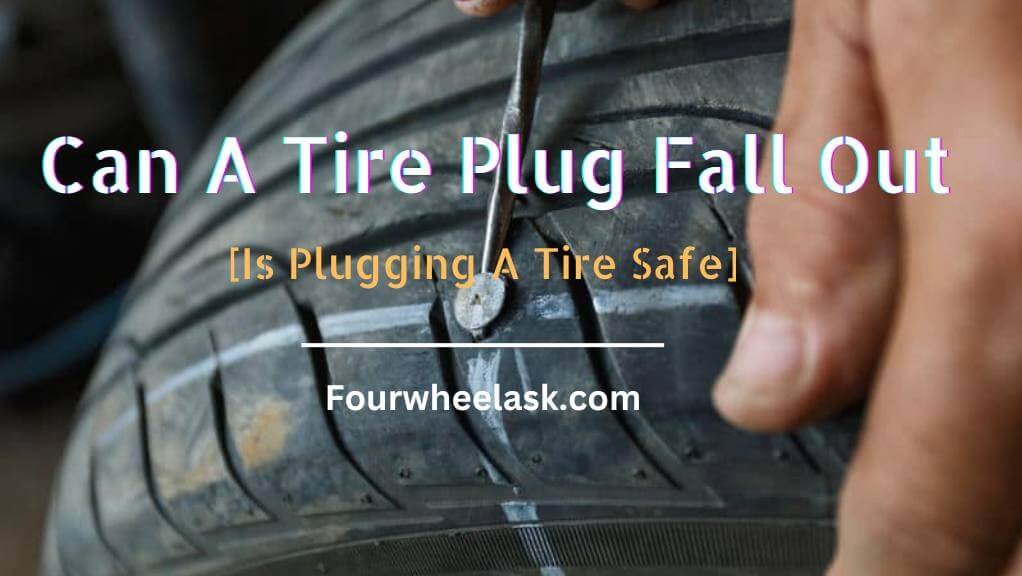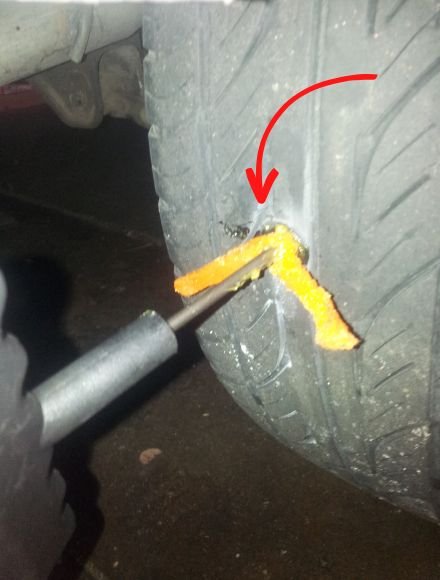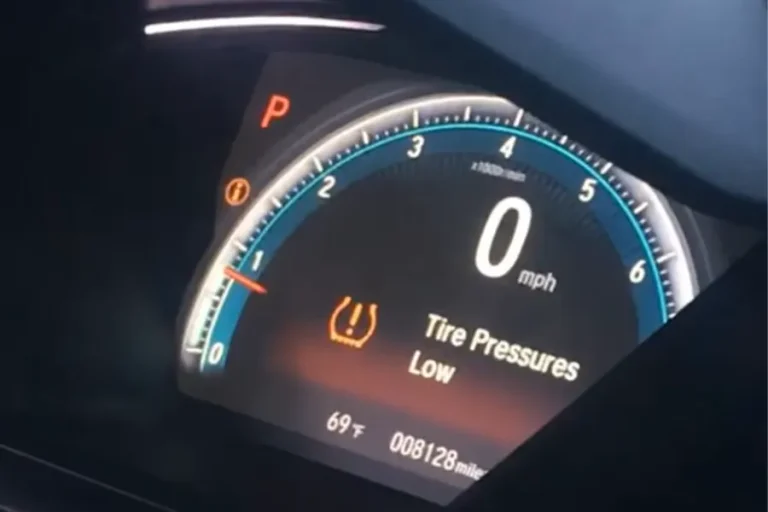Can A Tire Plug Fall Out – is plugging a tire safe?
Yes, a tire plug can potentially fall out if not cared for and maintained properly on a regular basis. These are short strips of leather cut according to size with a liquid glue that sticks to the surface of the tire. It allows you to reuse the tires for much longer without falling off.
Even though these plugs may last as long as they do, it is not recommended or safe to leave them in for more than a few days. This is because it could come undone over time and cause the tire to lose its air in seconds, causing deadly accidents without you noticing until it is too late.

How To Plug A Tire?: A Step-By-Step Guide
Plugging a tire requires precision and steady hands to place it perfectly on top of the leak. It is a rather simple process to get done. However, it certainly is a tedious job and needs to be done with proper knowledge and skill. The following steps will guide you to plug a tire with ease and precision-
1. Identify the Leak
The first step to working with a tire plug is identifying where the tire is leaking from. While it can be time-consuming and irritating to find those barely visible leaks. Yet, it’s essential that you figure out the source of this issue since it’ll allow you to proceed with further plugging steps.
2. Clear the Leak and Clean the Surface
It is important to remember where each tire leak is located and how many of them are there. Get the appropriately sized tools and tweezers to prick and pry the source of the leak. If you can prick the whole thing off the tire while being intact, it should make your job much easier. However, if the item that poked the hole breaks apart and a portion of it remains lodged inside the tire, it is crucial to get that broken bit off immediately.
Experts’ Tip: It’s highly recommended that you use different tools or sized tweezers to help you in the process and ensure no residue is left behind.
3. Prepare The Plug
Before plugging a tire, it is suggested to allow the tire to deflate, although it is not always necessary. Before you take the plug out of the package, have all the necessary tools to insert the plug to help you in the process to minimize the time needed. Afterward, spray a little bit of water on top of the tire to know where your tire is losing air. After confirming the spot, grab all your tools and necessary items to begin the process of plugging and sealing off the leak.
4. Insert or Apply the Plug
Once prepared, quickly brush off and wipe the area before inserting the plug through the reamer. After this is done, apply force to pass the reamer through the leak. However, we strongly recommend that you use your finger to shove and seal the leak once and for all.
5. Clean the Residue off the Surface
Since the plug is applied using a liquid glue-like substance and a hefty amount of lubricant, it is only obvious that there is some spillage all around the leak. If the leak is narrower, it only smears the lubricant and glue across the surface and cause a mess. After the plug has been inserted 2/3rd way in, use a blade to cut off the extra, seal the leak and wipe everything clean.
are tire plugs safe – Should You Fix Or Replace It?

According to people with prior experience and automotive experts, it is never a good idea to fix or repurpose a plug that has once been already used. It could cause to be incredibly problematic and lead to fatality.
Since the tires on any vehicle are in constant motion, they can get heated very quickly. The heat from the tire could easily cause the plug to come undone and cause accidents.
Fixing plugs can only be a temporary solution to the problem as once you fix it, there are chances that it might get undone any time during your travel. This can prove risky as your vehicle may get off-balance, which you won’t want to happen.
Therefore, we always suggest that you always replace your tire and ensure it stays intact for upcoming years. However, we never recommend that you replace it with your own (unless you are a professional yourself). It’s always a good idea to get it replaced by a mechanic who knows all the ins and outs of the process.
Plug vs Patch: (A Brief Comparison)
Tire plug and patch are used for the same purpose, to seal a leak and grant enough time to get to a professional. However, there are certain aspects to both of these that make them different, such as –
- Application Process
Applying the patch on a tire is much different from that inserting a plug. Inserting a plug requires additional tools and a lot of strength to shove it in. While the patch requires a clean surface to paste on and be done with.
- Time Taken
Inserting the plug into a tire evidently requires more time as it needs to be wrapped around a reamer and then forced into the tire. Meanwhile, applying a patch to seal a leak requires little to no time at all. However, while working with a patch, you need to be very precise before pasting it.
- Force To Apply
Applying a patch does not require as much force as inserting a plug does. Although you must apply pressure to paste the patch and seal the lock all around, inserting a plug requires much more work.
How to plug or re-plug a tire >> Check out the video below:
Bottom Line
Everyone has encountered the punctured tire ordeal at some point, making them wonder can a tire plug fall out?
Well, now you know that it can fall out! So, you should always carry a tire plug kit with you at all times. And as mentioned earlier, plugging a tire should be a temporary solution and never be ignored.
Furthermore, always remember to get your tire replaced once you reach back to your destination. A replaced tire over a fixed one can be a lifesaver!

Certification: BSc in Mechanical Engineering
Education: Mechanical engineer
Lives In: 539 W Commerce St, Dallas, TX 75208, USA
Md Rofiqul is an auto mechanic student and writer with over half a decade of experience in the automotive field. He has worked with top automotive brands such as Lexus, Quantum, and also owns two automotive blogs autocarneed.com and taxiwiz.com.





